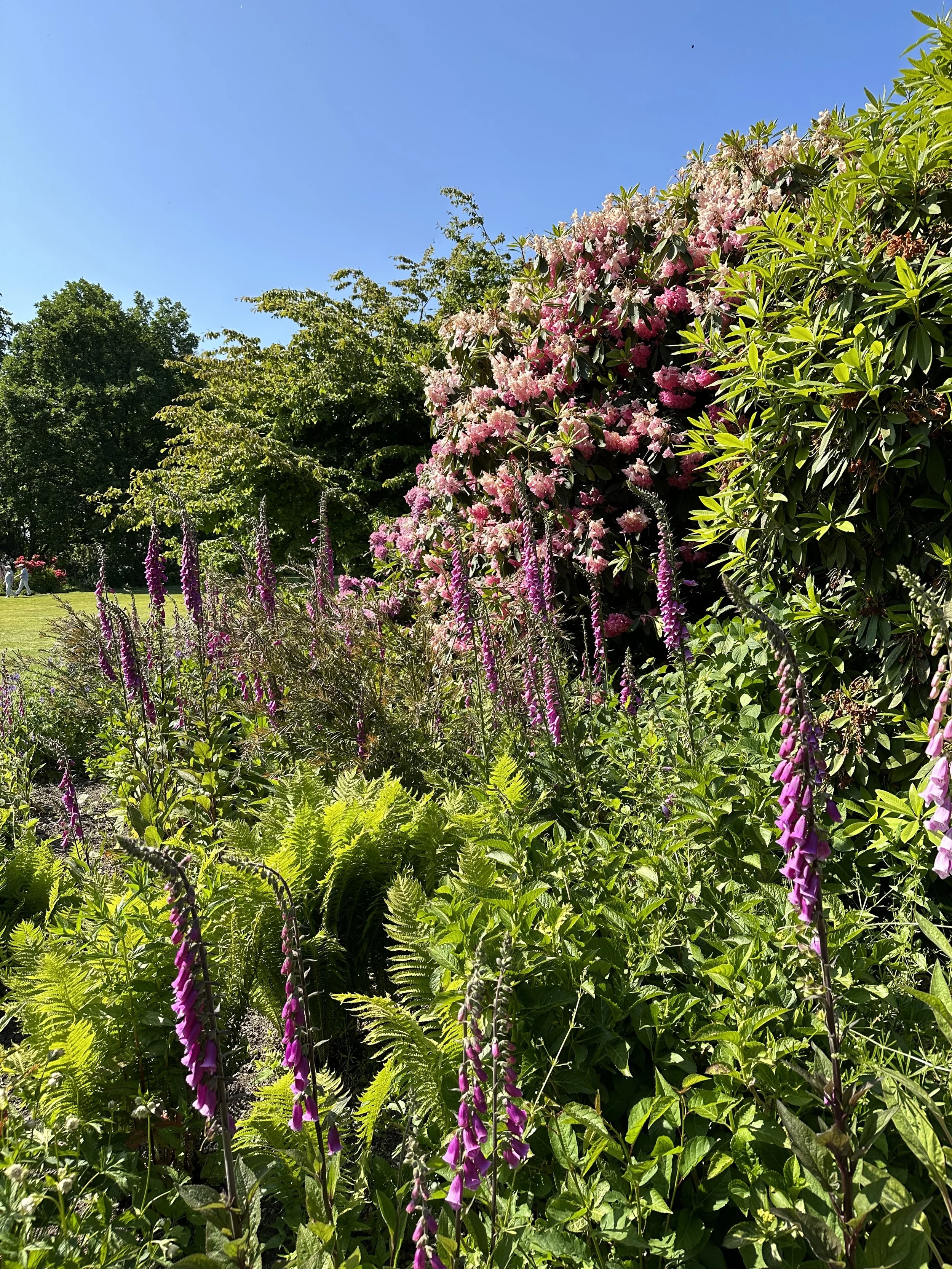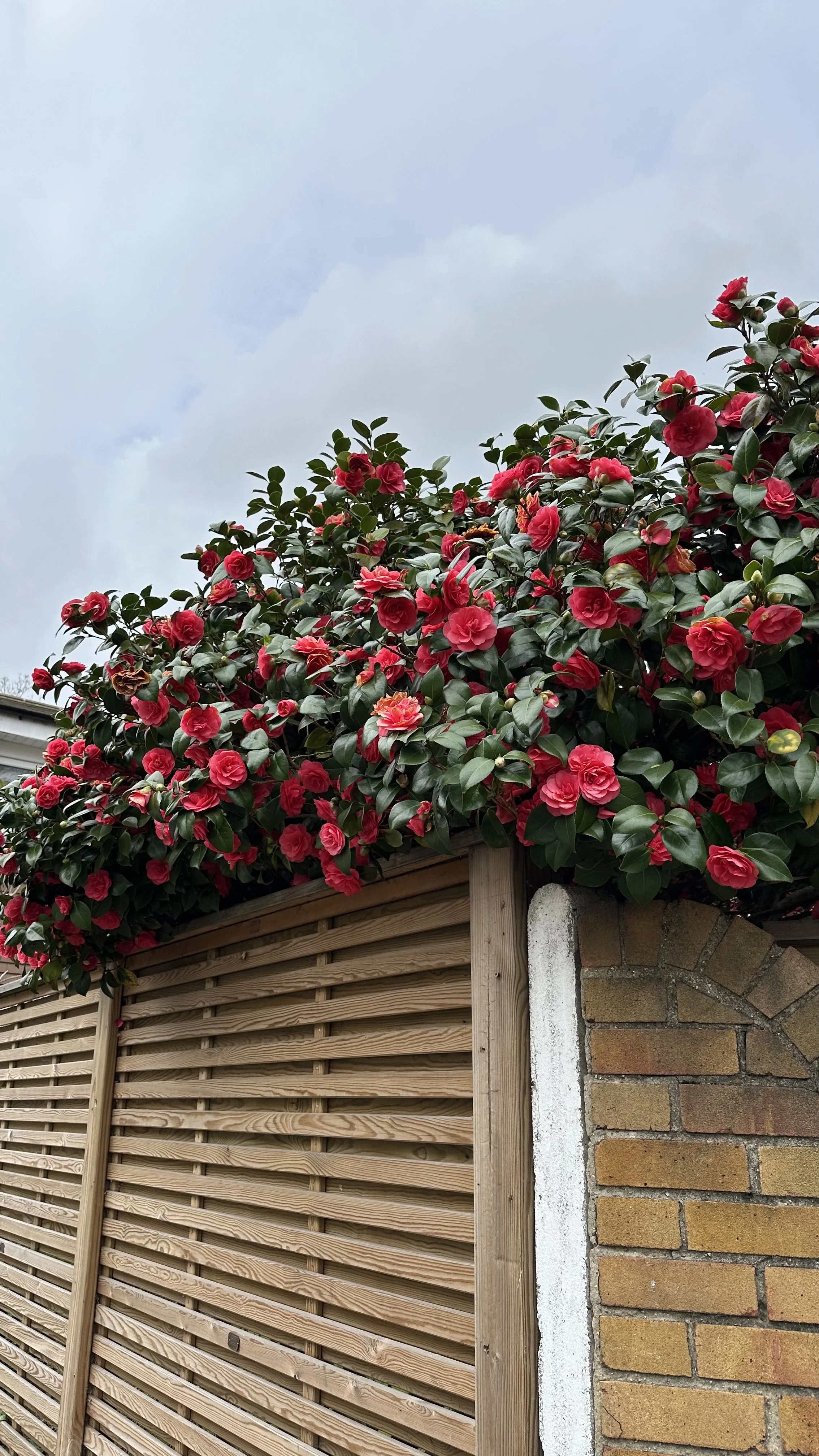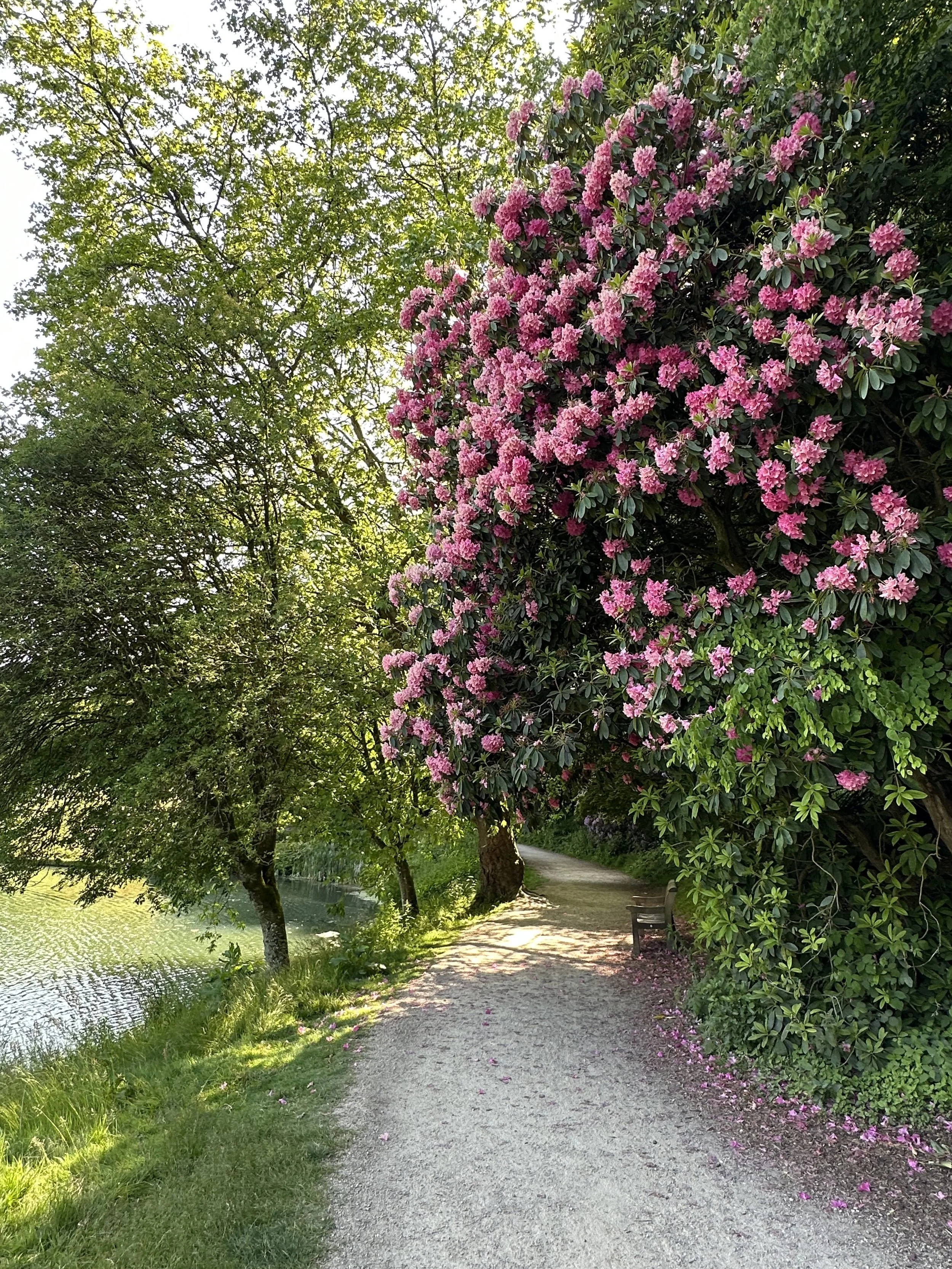The Golden Hour Garden: Best Plants for a South East Facing Garden
This article has links to products that I may make commission from.
An east facing garden, and more specifically, a southeast facing garden, opens the door to a unique range of gardening opportunities.
This aspect differs significantly from a north facing garden or a west facing garden, as it bathes in the morning sun and relishes in the afternoon shade, making it an ideal environment for certain types of plants.
Check out my other guides for the best plants for your garden based on which direction your garden faces:
Understanding Your Garden Aspect
Your garden aspect plays a pivotal role in determining what plants will thrive best.
A garden facing the southeast direction basks in sunlight until early afternoon.
It's quite different from a south-facing garden, which gets full sun throughout the day, or a west-facing garden that sees the most sunlight in the afternoon.
Understanding your garden aspect is essential for successful gardening as it determines how much sunlight your garden receives throughout the day, and in turn, impacts what types of plants you can successfully grow.
North Facing GardeN
A north facing garden is typically the coolest and shadiest as it receives the least sunlight.
The sun moves across from east to west on the south side, so the garden gets little direct sunlight.
This might be challenging for growing sun-loving plants but it's great for shade-tolerant plants and can create a lush, green garden.
Read more here about the best plants for a north facing garden.
South Facing Garden
In contrast, a south-facing garden receives the most sunlight throughout the day.
The garden will bask in the sun from morning till evening, providing ideal conditions for plants that need lots of sunlight and can tolerate heat.
This aspect could be more challenging for plants that need cooler, shaded conditions.
Read more here about the best plants for a south facing garden.
East Facing Gardens
An east facing garden, like a southeast facing garden, gets plenty of morning sunlight but becomes progressively shadier in the afternoon.
This provides a good balance between sun and shade, allowing for a range of plants to be cultivated.
Plants that prefer cooler conditions or are sensitive to strong afternoon sunlight will do well here.
Read more here about the best plants for an east facing garden.
West Facing Garden
A west facing garden receives evening sun.
The garden might be cool and shaded in the morning, but it will receive direct sunlight in the afternoon and early evening.
This aspect suits plants that need lots of light but also can handle cooler morning temperatures.
Read more here about the best plants for a west facing garden.
Does a South East Facing Garden Get Sun?
In general, a south-east facing garden tends to receive sun during the morning and early afternoon.
The exact amount of sunlight will depend on various factors such as the latitude, surrounding buildings or trees, and the time of year.
However, as a general rule, south-east facing gardens receive more sunlight in the morning compared to the afternoon and evening.
This orientation is great for plants that prefer more direct sunlight in the earlier parts of the day.
It's worth noting that the specific conditions of a garden can vary, so it's always helpful to observe the sunlight patterns throughout the day in your particular location to get a more accurate understanding of how much sun your south-east facing garden receives.
Is a South East Facing Garden Good?
A south-east facing garden can be great for several reasons:
Sunlight Exposure
South-east facing gardens receive good sunlight exposure in the morning and early afternoon, which is typically beneficial for plants that thrive in direct sunlight.
This orientation allows for optimal photosynthesis and growth, especially for sun-loving plants, flowers, and vegetables.
Warmth and Light
The morning sun in a south-east facing garden can provide a lovely warm environment for outdoor activities.
It allows you to enjoy breakfast or a cup of coffee outside while basking in the gentle morning rays.
Cooler Afternoons
As the day progresses, a south-east facing garden tends to receive less direct sunlight, which can help keep the garden cooler during the hotter parts of the day.
This can be great in regions with scorching summers or if you prefer spending time outdoors without being exposed to intense sunlight.
Versatility
South-east facing gardens offer a balance between sun exposure and shade, making them versatile for a wide range of plant selections.
You can choose plants that thrive in full sun for the morning period and introduce shade-tolerant plants for the afternoon, ensuring a diverse garden.
However, it's important to consider your specific climate and local conditions when evaluating a south-east facing garden.
Factors such as the presence of tall buildings, trees, or shading structures can affect the amount of sunlight your garden receives.
Top Plants for Your Southeast Facing Garden
If your garden faces south-east, you have a broad range of plant possibilities at your disposal.
The southeastern sun is less intense than the harsh midday sun in a south-facing garden, and the afternoon shade provides a welcome break, particularly during hot summers.
Here are my top plant picks for your southeast facing garden:
Camellias
Ideal for a southeast facing garden, they enjoy the morning sun and require protection from the afternoon heat, making them perfect for a southeast facing garden.
1. Sunlight Requirement:
Camellias thrive in locations with partial shade to full sun, which perfectly matches the conditions of a southeast-facing garden.
They appreciate the morning sunlight but need protection from the intense afternoon sun.
In a southeast-facing garden, they receive plentiful morning sun and are generally shaded from the harsher afternoon sun.
2. Temperature Tolerance:
Camellias prefer cooler conditions.
They struggle in the intense heat, especially when combined with direct afternoon sunlight, as it can cause leaf scorch and may harm flower buds.
A southeast-facing garden tends to be a bit cooler in the afternoon, providing an environment that camellias find favorable.
3. Soil Preferences:
Camellias prefer well-drained, acidic soil rich in organic matter.
This type of soil is often found in gardens that have partial shade, like those in southeast-facing gardens.
4. Variety of Species:
There are many species of camellias to choose from, offering a variety of flower colors, forms, and sizes.
This allows you to choose the best camellia for your specific garden conditions and design preferences.
Here is my recommend camellia variety for your southeast facing garden:
Rhododendrons
Another plant that thrives in morning sun and afternoon shade, Rhododendrons require well-drained soil, as they don't like waterlogged conditions.
1. Sunlight Requirement:
Rhododendrons appreciate morning sunlight and afternoon shade, which is exactly the sun exposure they would receive in a southeast-facing garden.
Too much intense afternoon sun can cause leaf scorch, while insufficient sun can lead to sparse flowering.
2. Temperature Tolerance:
These plants prefer moderate climates and are not tolerant of extreme heat, making the cooler afternoon conditions of a southeast-facing garden ideal for their growth.
3. Soil Preferences:
Rhododendrons thrive in well-drained, slightly acidic soil, often found in shaded or partially shaded locations such as a southeast-facing garden.
They also benefit from soil rich in organic matter, which helps to retain moisture while ensuring proper drainage.
4. Variety and Versatility:
Rhododendrons come in many different sizes, colors, and bloom times.
This variety allows you to choose the perfect rhododendron for your garden's specific conditions and aesthetic.
5. Flowering Period:
Rhododendrons are valued for their spectacular clusters of large, vibrant flowers that bloom in late spring.
Their blooms provide color and interest in the garden when many other plants have finished their spring show.
6. Year-Round Interest:
Beyond their stunning blooms, many rhododendrons also offer attractive foliage for year-round interest.
Some varieties even boast beautiful autumn color or interesting bark.
Here is the rhododendron variety I recommend for south east facing gardens:
Hostas:
Varied and beautiful, Hostas thrive in shade but also appreciate some morning sunlight.
They will be content in a southeast facing garden.
1. Sunlight Requirement:
Hostas are known for their shade tolerance, but they do appreciate some morning sun.
Too much intense sunlight, especially in the afternoon, can cause the leaves to scorch and fade.
In a southeast-facing garden, they get a gentle dose of morning sunlight and are then shaded during the hotter afternoon hours, which suits them perfectly.
2. Variety and Versatility:
With their extensive variety of sizes, leaf shapes, colors, and textures, Hostas offer endless options for your garden.
This variety lets you choose the best Hosta for your specific garden conditions and design.
They can also be used as ground cover in larger spaces or as border plants in smaller gardens.
3. Soil Preferences:
Hostas prefer well-drained soil that is rich in organic matter.
This helps the plants retain moisture while ensuring they don't become waterlogged, which could lead to root diseases.
4. Low Maintenance:
Hostas are relatively low maintenance once established.
They do not require much beyond regular watering, occasional feeding, and removing dead leaves.
5. Attractive Foliage:
While Hostas do produce flowers, they are primarily grown for their beautiful, decorative leaves.
This foliage can add visual interest to your garden from spring until frost, long after many flowering plants have faded.
6. Tolerance for Cooler Temperatures:
Hostas are quite hardy and can tolerate cooler temperatures, which makes them suitable for the afternoon shade in a southeast-facing garden.
Learn more about growing and caring for hostas with my guides:
Hosta Care in Winter to Ensure Springtime Splendor
Here are the hostas I recommend for a south east facing garden:
Azaleas:
With their vibrant colors, Azaleas can brighten up your garden.
They prefer well-drained soil and a balance of sun and shade.
1. Sunlight Requirement:
Azaleas do well in partial shade to full sun.
They enjoy the morning sun but require protection from the harsh afternoon sun to prevent leaf scorch and fading blooms.
In a southeast-facing garden, they receive the early sunlight they love, followed by shade or dappled sunlight in the afternoon.
2. Temperature Tolerance:
Azaleas prefer moderate climates and can struggle with excessive heat.
The cooling afternoon shade of a southeast-facing garden provides a reprieve from heat stress during the warmest parts of the day.
3. Soil Preferences:
Azaleas thrive in well-drained, acidic soil, rich in organic matter.
This type of soil is often found in gardens that have partial shade, making southeast-facing gardens a good fit.
4. Spring Blooms:
Azaleas are known for their vibrant, showy flowers that bloom in the spring, providing a burst of color and beauty to your garden.
The cooler afternoon shade helps prolong the bloom period by protecting the flowers from extreme heat.
5. Size and Form:
With their compact size and a wide variety of forms and colors, azaleas can fit into many garden designs.
They are excellent as foundation plantings, border plants, or even as standalone specimens in a garden.
6. Evergreen and Deciduous Varieties:
Depending on your climate and aesthetic preferences, you can choose from evergreen or deciduous azaleas.
Evergreen azaleas can provide year-round interest to your garden, while deciduous types often offer spectacular autumn colors.
My recommended azalea variety for your south east facing garden:
Ferns:
If your garden faces southeast, consider ferns.
While they enjoy the shade, they also appreciate some morning sun.
Learn more about growing ferns in my guide Evergreen Ferns for Year-Round Interest.
1. Sunlight and Shade Requirement:
Most ferns are shade-tolerant plants that can endure a bit of morning sun, making them ideal for southeast-facing gardens.
They receive the softer morning sun and then get the shade they need during the hotter part of the day.
2. Variety and Versatility:
There is a vast variety of ferns with different textures, sizes, and shapes.
From delicate maidenhair ferns to sturdy sword ferns, you can choose the type that best suits your garden's specific conditions and aesthetic.
3. Soil Preferences:
Ferns generally prefer well-drained soil that is rich in organic matter.
This type of soil, often found in shaded or partially shaded locations like southeast-facing gardens, helps ferns retain the moisture they need.
4. Low Maintenance:
Once established in the right conditions, ferns are relatively low maintenance.
They don't require pruning or regular fertilization, making them a great choice for gardeners seeking an easy-care plant.
5. Year-Round Interest:
Depending on the species, ferns can provide interest in your garden for much of the year.
Even in winter, evergreen varieties maintain their color and form, providing texture and greenery.
6. Tolerance to Cooler Temperatures:
Many ferns are quite hardy and can tolerate cooler temperatures and frosts, making them suitable for the shaded, cooler conditions of a southeast-facing garden in the afternoon.
Here is the fern variety I recommend growing in a south east facing garden:
Planning Your Southeast Facing Garden
Careful planning will allow you to include plants that flourish under different conditions in your southeast facing garden.
For example, you can position plants that need full sun, like roses, to benefit from the morning sunlight.
Simultaneously, shade-loving plants can be placed in spots where the afternoon shade is guaranteed.
Understanding Sun Patterns
Southeast facing gardens get plenty of morning sun, which is less intense and great for many types of plants, and are shaded from the more intense afternoon sun.
The amount of sunlight will also change with the seasons.
Understanding this pattern helps you to plan where to place different plants according to their light requirements.
Selecting Suitable Plants
Your plant selection should primarily include those that thrive in full to partial sun.
Plants that enjoy the morning sun and tolerate or need some afternoon shade are ideal.
With careful planning, you can grow a diverse range of plants.
Arranging Plants Thoughtfully
Think about the height and spread of the mature plants when arranging them in your garden.
Taller plants should be at the back so they don't shade out smaller ones.
Similarly, plants that spread out might need more space or could provide shade for smaller, shade-loving plants.
Implementing a Watering Schedule
Morning sun and afternoon shade affect how quickly your soil dries out.
Implement a watering schedule to ensure your plants get the right amount of moisture.
Plants in sunny spots might need more frequent watering than those in shaded areas.
For more watering tips, check out my guide How to Use Watering Globes.
Considering Aesthetics
Last but not least, think about the colors and bloom times of different plants.
Aim to have a variety of plants that bloom at different times to keep your garden looking beautiful all year round.
Caring for Your Southeast Facing Garden
Proper plant care is critical for maintaining a vibrant southeast facing garden.
The soil condition plays an important role in the health of your garden, with some plants preferring well-drained soil and others needing soil that retains moisture.
Caring for your southeast facing garden involves several key elements including watering, fertilizing, pruning, and managing pests and diseases.
Here's what you need to know:
1. Watering:
The watering needs of your garden will be determined by the specific plants you have, the soil type, and the local climate.
In a southeast facing garden, the morning sun can dry out the soil quickly.
It's important to monitor the moisture levels in your garden and water the plants as needed.
Watering should be done in the early morning or late evening to minimize evaporation.
For more watering tips, check out my guide: Water Butts: Sustainable Water Storage for Your Garden.
2. Fertilizing:
The type and frequency of fertilization will depend on the plants you're growing and the nutrient content of your soil.
Regular soil testing can provide information on nutrient deficiencies so you can amend your soil accordingly.
Many plants benefit from an annual or bi-annual application of a balanced fertilizer.
Here is the fertilizer I recommend:
3. Pruning:
Regular pruning helps to keep plants healthy and maintain their shape.
The timing and extent of pruning will vary depending on the specific plant species.
Some plants, such as roses, benefit from heavy pruning in late winter or early spring, while others might need only light pruning to remove dead or diseased branches.
4. Pest and Disease Management:
Keep an eye out for signs of pests or diseases, such as discolored leaves, stunted growth, or visible insects.
Early detection is key to preventing a small problem from becoming a major infestation.
5. Mulching:
Mulch helps to conserve soil moisture, suppress weeds, and improve soil quality over time.
Apply a layer of organic mulch, such as compost or shredded leaves, around your plants each spring.
Check out my guide: The Best Alternatives to Traditional Mulch for Your Garden.
Here is the mulch I recommend:
6. Seasonal Care:
Some plants might require additional care in certain seasons.
For example, some perennials might need to be cut back in the fall, while others should be left standing to provide winter interest and habitats for beneficial insects.
Caring for your garden involves ongoing effort, but with time and experience, you'll learn what works best for your specific plants and local conditions.
To sum up, a southeast facing garden can host a wide range of plants due to its balance of sunlight and shade.
It may differ from managing a northwest or southwest facing garden, but the joy of seeing your plants flourish in the morning sun and cool afternoon shade will be incredibly rewarding.
The direction your garden faces shouldn't restrict your plant choices, but rather guide you to the best plants for your specific garden conditions.
Whether your garden faces south, north, east, or west, with the right care and attention, it can be transformed into a beautiful, productive space.













































